
Join our comprehensive Looker training course to master data exploration and visualization. This program covers the essentials of LookML for data modeling, creating interactive dashboards, and integrating Looker with various data sources. Participants will learn to optimize performance, implement data security, and leverage advanced analytics features. Ideal for business analysts, data scientists, and developers, this course empowers you to drive business insights and decision-making using Looker’s powerful BI platform.
Looker Interview Questions Answers - For Intermediate
1. Explain the purpose of data groups in Looker.
Data groups are used to define refresh schedules for PDTs based on specific criteria, such as time intervals or data changes. They ensure that PDTs are updated efficiently, maintaining data accuracy and performance.
2. How can you optimize the performance of Looker queries?
Optimize Looker queries by indexing database tables, using derived tables or PDTs, minimizing the use of highly granular data, and leveraging Looker’s caching mechanisms. Proper data modeling and efficient SQL queries also contribute to better performance.
3. What is the function of Liquid variables in Looker?
Liquid variables are placeholders used in LookML to insert dynamic content, such as user-specific values or conditional logic. They enhance the flexibility and customization of data models and visualizations.
4. How do you create a drill-down path in Looker?
To create a drill-down path, define links in LookML for dimensions or measures, specifying the target Explore or dashboard. This allows users to click on data points and navigate to more detailed views, facilitating deeper analysis.
5. What are Looker Actions, and how are they used?
Looker Actions enable users to trigger external processes or integrations directly from Looker. Examples include sending data to other applications, scheduling reports, or invoking APIs. Actions streamline workflows and enhance automation.
6. Describe the process of creating custom fields in Looker.
Custom fields are created within an Explore by defining new calculations, aggregations, or transformations based on existing dimensions and measures. Users can create these fields using the custom field editor without modifying the underlying LookML.
7. How do you handle missing data or null values in Looker?
Handle missing data or null values by using LookML functions such as coalesce to replace nulls with default values, applying filters to exclude incomplete records, or creating conditional logic to manage and visualize data appropriately.
8. Explain the role of Looker Data Actions in workflows.
Looker Data Actions allow users to take direct action on their data from within Looker, such as sending emails, updating records, or triggering webhooks. This capability enhances productivity by integrating analytics with operational workflows.
9. What is the significance of Looker’s data modeling layer?
Looker’s data modeling layer, implemented through LookML, separates data logic from presentation. It ensures consistent, reusable definitions of business metrics, facilitating accurate and scalable analytics across the organization.
10. How do you implement row-level security in Looker?
Implement row-level security by using access filters in LookML to restrict data visibility based on user attributes or roles. This ensures that users only see the data they are authorized to access, enhancing security and compliance.
11. What are the benefits of using Looker’s caching mechanism?
Looker’s caching mechanism improves query performance by storing the results of frequently run queries. This reduces the load on the database, speeds up data retrieval, and enhances the overall user experience.
12. How do you share insights and reports in Looker?
Share insights and reports by saving Looks or dashboards and sharing them via email, scheduled deliveries, embedded links, or direct sharing within Looker. This facilitates collaboration and dissemination of key information across the organization.
13. Describe the use of filters in Looker visualizations.
Filters in Looker visualizations allow users to refine and customize their data views by specifying criteria such as date ranges, categories, or numerical thresholds. Filters enhance data exploration and enable more targeted analysis.
14. What is the purpose of Looker’s Explore permissions?
Explore permissions control user access to specific Explores, defining who can view, query, and interact with different data sets. Properly configured permissions ensure data security and compliance with organizational policies.
15. How do you ensure data consistency and accuracy in Looker reports?
Ensure data consistency and accuracy by validating LookML models, conducting thorough testing, implementing data quality checks, and regularly reviewing and updating data definitions. Collaboration between data engineers and analysts also helps maintain data integrity.
Looker Interview Questions Answers - For Advanced
1. Explain the use of Looker’s data actions for operational analytics and provide examples.
Looker’s data actions enable operational analytics by allowing users to trigger actions directly from within Looker dashboards and visualizations. Examples include sending data to third-party applications, updating records in CRM systems, or triggering alerts and notifications. For instance, a sales team can use data actions to push lead information from a Looker dashboard to Salesforce, ensuring that sales opportunities are tracked in real-time. Another example is using data actions to notify the operations team of inventory levels falling below a threshold, prompting immediate restocking. This integration of insights with operational workflows ensures that data not only informs decisions but also drives immediate actions, enhancing operational efficiency.
2. How can Looker’s embedding capabilities be used to create embedded analytics solutions?
Looker’s embedding capabilities allow organizations to integrate Looker’s analytics and visualizations into external applications, websites, or portals. This can be achieved by using Looker’s Embed API, which provides secure and customizable embedding options. The process involves:
- Embedding Looker Content: Creating embeddable Looks, dashboards, or Explores and integrating them into external platforms using iframe or JavaScript.
- Customizing User Experience: Tailoring the embedded analytics to match the look and feel of the host application, ensuring a seamless user experience.
- Managing Access: Implementing secure authentication and authorization mechanisms to control access to embedded content.
- Interactive Features: Enabling interactive features such as filtering, drilling down, and dashboard actions within the embedded environment.
3. How can Looker’s scheduling and alerting features be leveraged to improve business operations?
Scheduling allows users to automate the delivery of reports and dashboards via email, Slack, or other communication channels. This ensures that decision-makers receive up-to-date information without needing to manually check dashboards. Alerts can be configured to trigger notifications based on specific conditions, such as reaching a sales target or detecting anomalies in data. These alerts ensure timely responses to critical events, allowing businesses to act quickly and maintain operational efficiency. By integrating scheduling and alerting into business processes, Looker helps keep all relevant parties informed and ready to act on data insights.
4. What are the key differences between Looker’s semantic layer and traditional BI tools?
Looker’s semantic layer, implemented through LookML, provides a flexible and reusable approach to data modeling. Unlike traditional BI tools, which often require manual SQL queries and static reports, LookML allows for the creation of dynamic data models that can be easily adapted and reused across different analyses. This layer abstracts the complexity of SQL, enabling business users to explore data without deep technical knowledge. Additionally, Looker’s semantic layer supports version control and collaboration, making it easier to manage and scale data models. This contrasts with traditional BI tools that may have more rigid, less adaptable data modeling processes.
5. Describe the steps involved in debugging and troubleshooting LookML code.
Debugging and troubleshooting LookML code involves several steps:
- Validation: Use Looker’s built-in validation tools to check for syntax errors and inconsistencies in LookML code.
- Logging: Review query logs to identify any errors or performance issues in the generated SQL queries.
- Exploration: Test individual dimensions, measures, and explores to ensure they return expected results.
- Comparison: Compare the generated SQL with the intended logic to identify discrepancies.
- Documentation: Review documentation and comments within LookML files to understand the expected behavior and logic.
- Iteration: Make incremental changes and revalidate to isolate the issue and confirm fixes.
6. How can Looker’s integration with cloud data warehouses enhance data analysis capabilities?
Looker’s integration with cloud data warehouses, such as Google BigQuery, Amazon Redshift, and Snowflake, enhances data analysis capabilities by leveraging the scalability, performance, and flexibility of these platforms. Cloud data warehouses can handle large volumes of data and complex queries efficiently, providing fast and reliable access to data. Looker’s direct-query approach takes advantage of these capabilities, enabling real-time analysis and interactive exploration of data. The integration also simplifies data management, as cloud data warehouses often provide built-in tools for data ingestion, transformation, and storage. This seamless connection between Looker and cloud data warehouses ensures that users can perform advanced analytics on vast datasets with ease.
7. What advanced visualization techniques can be implemented in Looker to enhance data storytelling?
Advanced visualization techniques in Looker include:
- Custom Visualizations: Using Looker’s visualization API to create bespoke visual elements tailored to specific data stories.
- Data Blending: Combining data from multiple sources within a single visualization to provide a comprehensive view.
- Interactive Dashboards: Implementing drill-downs, filters, and interactive elements that allow users to explore data dynamically.
- Conditional Formatting: Highlighting key insights and trends using color-coding and visual cues.
- Advanced Chart Types: Utilizing less common chart types, such as waterfall charts, heat maps, and geospatial maps, to convey complex information effectively.
These techniques enhance the clarity and impact of data presentations, making it easier for stakeholders to understand and act on insights.
8. Explain how Looker supports data democratization within organizations.
Looker supports data democratization by providing a platform that enables all users, regardless of technical expertise, to access, explore, and analyze data. LookML abstracts complex SQL queries, allowing business users to interact with data through a user-friendly interface. Looker’s self-service capabilities empower users to create their own reports and dashboards without relying on IT or data teams, fostering a culture of data-driven decision-making. The platform’s robust security and governance features ensure that data access is controlled and compliant with organizational policies, making it safe to democratize data across the organization. This approach enhances collaboration, innovation, and efficiency, as insights are more readily available to everyone.
9. Discuss the importance of metadata management in Looker and how it can be implemented.
Metadata management is crucial in Looker as it ensures that data is well-organized, understandable, and accessible. Implementing metadata management involves:
- Documentation: Clearly documenting LookML definitions, including dimensions, measures, and relationships, to provide context and understanding.
- Standardization: Establishing naming conventions and standards for LookML elements to maintain consistency.
- Version Control: Using Git integration to manage changes and maintain a history of modifications.
- Tagging and Categorization: Implementing tagging systems to categorize and organize metadata, making it easier to search and navigate.
- Data Lineage: Tracking the origins and transformations of data to ensure transparency and trust in data quality.
Effective metadata management enhances the usability and reliability of Looker, facilitating better data governance and user confidence in the analytics platform.
10. What strategies can be employed to ensure high availability and disaster recovery for Looker?
Ensuring high availability and disaster recovery for Looker involves several strategies:
- Redundant Infrastructure: Deploying Looker across multiple data centers or cloud regions to provide redundancy and failover capabilities.
- Backup and Restore: Implementing regular backup schedules for Looker’s configurations, LookML projects, and data connections, and ensuring quick restore procedures.
- Load Balancing: Using load balancers to distribute traffic across multiple Looker instances, preventing single points of failure.
- Monitoring and Alerts: Setting up comprehensive monitoring and alerting systems to detect and respond to issues proactively.
- Disaster Recovery Planning: Developing and testing a disaster recovery plan that outlines the steps to be taken in case of a major outage, ensuring minimal downtime and data loss.
These strategies help maintain the reliability and continuity of Looker services, ensuring that users can access critical data and insights at all times.
11. How can Looker’s multi-tenancy features be leveraged for SaaS applications?
Looker’s multi-tenancy features can be leveraged for SaaS applications by allowing each tenant to have isolated data views and customized experiences. This can be implemented by:
- Row-Level Security: Using access filters to ensure that tenants can only see their own data, providing data isolation and security.
- Tenant-Specific LookML: Creating tenant-specific LookML models and views that cater to the unique needs and requirements of each tenant.
- Custom Dashboards: Enabling tenants to create and manage their own dashboards and reports, tailored to their business needs.
- Scalability: Ensuring that the Looker deployment can scale to accommodate multiple tenants, each with potentially large datasets and user bases.
Leveraging multi-tenancy in Looker enhances the SaaS application’s ability to provide personalized and secure analytics solutions to a diverse client base.
12. How can Looker’s advanced security features be utilized to protect sensitive data?
Looker’s advanced security features protect sensitive data through a combination of role-based access control, content permissions, and data encryption. Role-based access control ensures that only authorized users can access specific data and functionalities. Content permissions further refine access control, allowing administrators to restrict access to particular Looks, dashboards, and Explores. Data encryption, both in transit and at rest, ensures that sensitive data remains secure. Additionally, Looker’s integration with enterprise authentication systems, such as SAML, LDAP, and OAuth, enhances security by enabling centralized user management and single sign-on capabilities. These features ensure that sensitive data is protected, meeting compliance requirements and minimizing the risk of unauthorized access.
13. How can Looker’s data validation features be used to ensure data quality and accuracy?
Looker’s data validation features help ensure data quality and accuracy by providing tools to define and enforce data consistency checks. This can be implemented through:
- LookML Validation: Using LookML’s built-in validation to catch syntax errors and logical inconsistencies before deploying changes.
- Data Testing: Implementing data tests in LookML to validate data against expected conditions, such as range checks, uniqueness constraints, and referential integrity.
- Exploratory Testing: Regularly exploring and querying data to identify anomalies or discrepancies.
- Automated Alerts: Setting up alerts to notify users and administrators of data quality issues, such as missing or out-of-range values.
14. Discuss the use of Looker’s advanced filtering capabilities for dynamic data exploration.
Looker’s advanced filtering capabilities enable dynamic data exploration by allowing users to apply complex and interactive filters to their data queries. Users can create custom filters based on multiple criteria, including ranges, conditions, and logical operators. These filters can be applied at the dimension, measure, or overall query level. Looker’s filter UI provides intuitive controls, such as date pickers, dropdowns, and search boxes, making it easy for users to refine their data views. Additionally, filter presets and parameters enable reusable and consistent filtering across different Looks and dashboards. This flexibility enhances the ability to explore data dynamically, uncovering insights that may not be apparent with static filters.
15. How can Looker’s custom fields and table calculations be leveraged to perform complex data transformations and analyses?
Looker’s custom fields and table calculations provide powerful tools for performing complex data transformations and analyses directly within the Explore interface. Custom fields allow users to create new dimensions and measures on the fly, using expressions and functions to transform and calculate data based on existing fields. Table calculations enable the creation of advanced calculations that operate on the results of the query, such as running totals, moving averages, and percentage changes. These features allow users to perform sophisticated analyses without modifying the underlying LookML model, providing flexibility and empowering business users to extract deeper insights from their data. Leveraging these capabilities enhances the analytical power of Looker and enables more granular and customized data exploration.
Course Schedule
| Dec, 2025 | Weekdays | Mon-Fri | Enquire Now |
| Weekend | Sat-Sun | Enquire Now | |
| Jan, 2026 | Weekdays | Mon-Fri | Enquire Now |
| Weekend | Sat-Sun | Enquire Now |
Related Courses
Related Articles
- Enhance Skills with Primavera P6 Fundamentals Rel 19 Course
- Streamline Revenue Management with SAP Financial Contract Accounting
- How to Start a Career in VHDL Programming?
- A Complete Guide to SAP Extended Warehouse Management (EWM) for Modern Enterprises
- Unleashing the Power of Data Science with R Certification Courses
Related Interview
Related FAQ's
- Instructor-led Live Online Interactive Training
- Project Based Customized Learning
- Fast Track Training Program
- Self-paced learning
- In one-on-one training, you have the flexibility to choose the days, timings, and duration according to your preferences.
- We create a personalized training calendar based on your chosen schedule.
- Complete Live Online Interactive Training of the Course
- After Training Recorded Videos
- Session-wise Learning Material and notes for lifetime
- Practical & Assignments exercises
- Global Course Completion Certificate
- 24x7 after Training Support





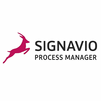

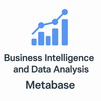
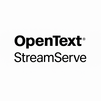

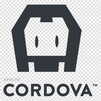

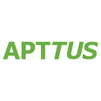


 Join our Live Instructor-Led online classes delivered by industry experts
Join our Live Instructor-Led online classes delivered by industry experts